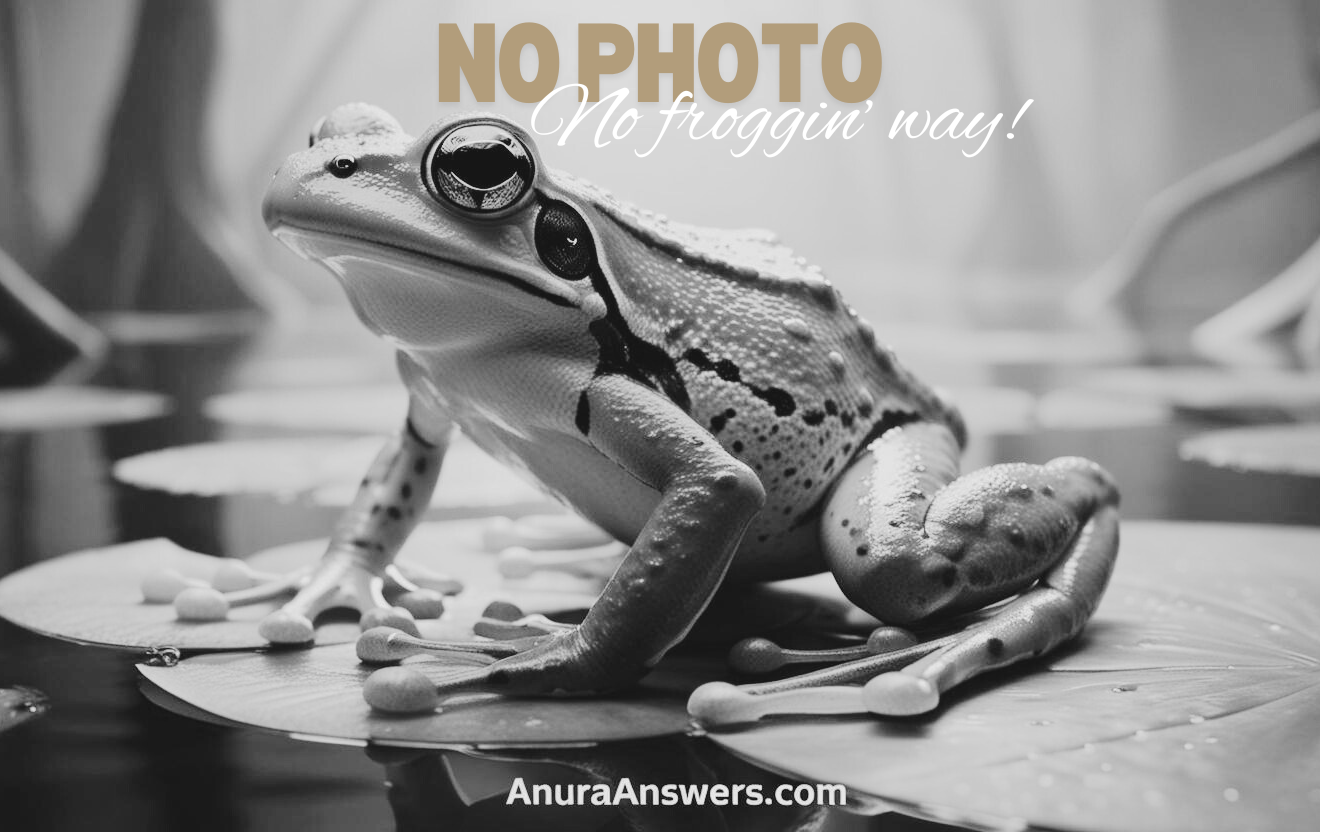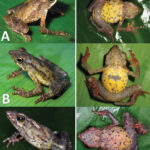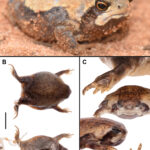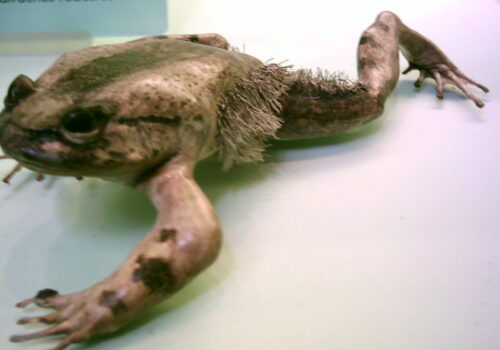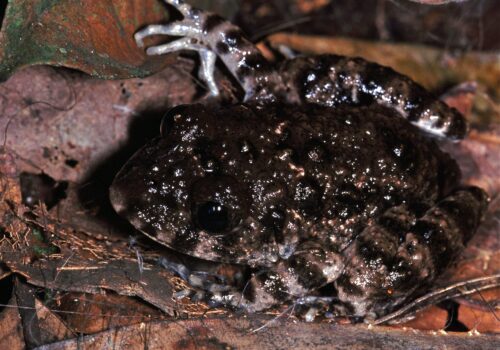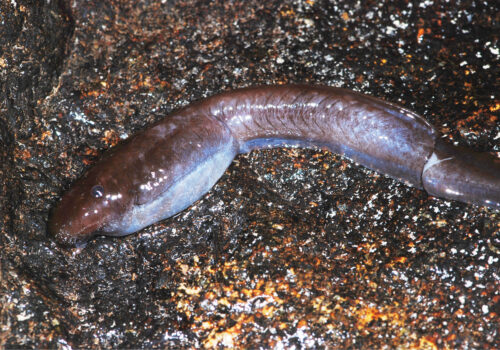Arthroleptis krokosua: The Elusive Jewel of West African Rainforests#
Hidden amidst the lush subtropical foliage and intricate leaf litter of Ghana’s enigmatic Krokosua Hills Forest Reserve lies a frog species so elusive and rare that its discovery marked a significant milestone for wildlife science. Arthroleptis krokosua, affectionately known as the Krokosua squeaker frog due to its distinctive call, has captivated researchers and conservationists alike, becoming a symbol of West Africa’s threatened biodiversity. This diminutive amphibian, barely exceeding a few centimeters in length, offers a fascinating glimpse into the complex and fragile life systems quietly thriving on the rainforest floor.
First described scientifically in 2008, Arthroleptis krokosua stands as a reminder that the intricate web of life often houses secrets yet unveiled, even in a thoroughly explored world. Although modest in stature, its ecological significance and sensitivity to environmental change have made it a focal point both for amphibian conservation strategies and as a poignant indicator of ecosystem health.
Taxonomy and Classification#
Belonging to the diverse family Arthroleptidae, Arthroleptis krokosua shares lineage with a fascinating array of frogs collectively known as squeaker frogs. These species derive this evocative name from their characteristic squeaks or chirps, distinct vocalizations used primarily during mating rituals. Within this family, the genus Arthroleptis comprises numerous ground-dwelling species adapted to life amidst forest leaf litter, often featuring cryptic coloration and rapid, darting movements for protection against predators.
The distinction of Arthroleptis krokosua from closely related species, such as Arthroleptis variabilis or Arthroleptis poecilonotus, was made possible by extensive genetic analyses, detailed morphological comparisons, and precise recordings of their unique vocal signatures. Although visually similar to other squeaker frogs, subtle characteristics have allowed scientists to confirm the species’ distinct identity, underscoring the importance of careful taxonomy in amphibian conservation.
Natural Habitat#
The elusive Arthroleptis krokosua has been exclusively recorded within the confines of Ghana’s Krokosua Hills Forest Reserve, an area revered for its extraordinary biological diversity and lush forest coverage. Primarily terrestrial, this frog has evolved to thrive on humid, shaded forest floors, nestled amid thick leaf litter, fallen logs, and dense underbrush. Its habitat offers not only shelter but plentiful prey, providing a rich mosaic of micro-habitats in which this secretive amphibian can prosper unseen.
A Fragile Forest Ecosystem#
The resilience and continued survival of the Krokosua squeaker frog depend heavily on the complexity and health of its rainforest habitat. The intact canopy, abundant rainfall, and rich biodiversity of microorganisms creating a thriving decomposition layer, are all indispensable elements contributing to the delicate balance sustaining this species. The leaf litter environment not only provides effective concealment from potential predators but also ensures consistent humidity—crucial to amphibians with permeable, moisture-dependent skin. The intricate network of roots, soil, fungi, and insects form a micro-ecosystem within which the squeaker frog plays its subtle, yet fundamental role.
Physical Characteristics#
In appearance, Arthroleptis krokosua exemplifies evolutionary adaptation, manifesting an understated beauty ideal for its covert existence. Adult frogs measure only about 23-25 millimeters from nose to vent, fitting comfortably into the palm of a hand. Their bodies are compact and robust—an adaptation proven ideal for quick leaps and agile terrestrial movements amid cluttered forest floors.
Coloration and Camouflage#
The coloration of the Krokosua squeaker frog is primarily earth-toned, presenting hues of rust, brown, olive, and subtle dark-brown markings. Their mottled appearance, complete with carefully irregular patterns, superbly mimics the forest floor’s variegated tapestry of fallen leaves and decomposed organic matter, providing a near-perfect camouflage. Eyes, disproportionately large yet strikingly sensitive, allow them to navigate low-light habitats beneath dense rainforest canopies.
Behavior and Life Cycle#
Observing the behavior of a species as elusive as Arthroleptis krokosua challenging even skilled biologists, yet decades of patient field studies have begun unwrapping the mysteries of their daily routines, feeding patterns, and reproduction.
Predatory Strategies and Diet#
Like many frogs in the Arthroleptidae family, Arthroleptis krokosua primarily feeds on small arthropods—ants, beetles, termites, and mites—making it an essential regulator of invertebrate populations. Its foraging behavior is marked by stealthy, opportunistic predation. With swift leaps and precise tongue-projection, the frog captures unsuspecting prey, maintaining the delicate balance of invertebrate species.
Reproductive Behaviors and Unique Life Cycle#
Distinctive among amphibians, Arthroleptis krokosua bypasses a typical aquatic tadpole stage—instead exhibiting direct development. Females deposit a small selection of eggs concealed within moist locations beneath logs or leaf litter. The eggs develop directly into miniature versions ofadult frogs. This adaptation not only reduces dependency on standing water but also minimizes predation risks associated with exposed tadpoles swimming in forest pools.
Mating generally takes place during moist seasons, with males employing their signature chirp-like calls to attract prospective mates. These courtship vocalizations, though quiet and subtle to human ears, constitute an essential part of the forest’s acoustic environment—a symphony subtly orchestrated amidst the nocturnal humming of insects and distant calls of tropical birds.
Ecological Role#
In ecosystems such as Krokosua Hills Forest, each species, no matter how small, fulfills an essential ecological role. Sitting near the base of the food web, Arthroleptis krokosua influences predator-prey dynamics profoundly. Its existence is closely linked to numerous food web threads—from controlling insect populations, thus balancing invertebrate biodiversity, to providing nourishment for larger predators such as birds, snakes, and small mammals.
Its sensitivity to environmental shifts places it among the ranks of amphibians globally valued as indicator species. A decline in its population would serve as a reliable warning sign of broader ecological disturbances faced by the entire forest ecosystem, urging immediate conservation attention.
Threats and Conservation Status#
Sadly, this extraordinary yet fragile frog faces considerable threats, primarily centered around habitat destruction and environmental degradation. Logging, agricultural expansion, and encroachment by human settlements imperil both the frog’s habitat and its very existence. Additionally, climate change-induced alterations in humidity patterns and rainfall threaten to dismantle the delicate conditions it requires to thrive.
The International Union for Conservation of Nature (IUCN) classifies Arthroleptis krokosua as “Critically Endangered,” underscoring the dire urgency for robust, targeted conservation efforts. Protective measures in place involve safeguarding the remaining forest areas, enforcing stricter regulations to deter logging and agricultural invasion, and enhancing local community involvement in conservation activities.
Cultural and Scientific Significance#
Beyond its ecological role, Arthroleptis krokosua represents an exciting entity for scientific exploration. Each discovery related to its life cycle and adaptive behaviors enriches our understanding of evolutionary biology and genetic diversity among amphibians, potentially carrying crucial implications for conservation biology.
Although culturally less prominent compared to other larger African wildlife, many indigenous folklore traditions across West Africa recognize amphibians symbolically—as indicators of rainfall, prosperity, or as mystical beings tied to forests’ sacred essence. Protecting such species inadvertently conserves cultural heritage integral to local communities.
Conclusion#
The tale of Arthroleptis krokosua epitomizes the beauty, complexity, and fragility of biodiversity hidden within the world’s disappearing rainforests. By highlighting the delicate interconnectedness between this modest amphibian and its ecosystem, we shed light on the critical need for sustained and meaningful conservation. This hidden gem of Ghana’s forests implores humanity to cherish and protect the abundant diversity life offers, prompting each of us to advocate and act in defense of nature’s most inconspicuous, yet invaluable creatures.
